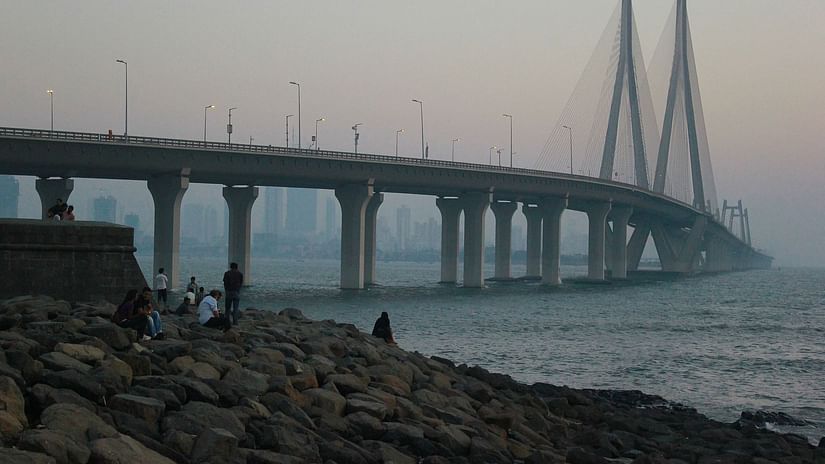- Sunburn Mumbai, 2025
- Diwali in Mumbai
- Lollapalooza India 2026 in Mumbai
- Music Events in Mumbai
- Navratri in Mumbai
- Enrique Iglesias concert India 2025
- Weekend Shopping in Bandra
- Money Expo India, 2025
- SIAL Mumbai, 2025
- Automation Expo Mumbai, 2025
- Global Fintech Fest, 2025
- Service Apartment in Bandra/Khar: While Your Dream Home Builds
- Amit Trivedi Live in Mumbai 2025: Dates, Venue & Ticket Details
- Guns N’ Roses Live in Mumbai 2025
- April Events in Mumbai
- Financial Hub of India
- March Events in Mumbai
- February Events in Mumbai
- Bandra During Christmas
- Events in Mumbai in January
- Events in Mumbai in December
- Expo in Mumbai 2024
- Accommodations Near Best Hospitals in Mumbai
- Mumbai Tourist Places
- Best Serviced Apartments in Mumbai For Family
- Short Stay in Mumbai
- Apartments for Short Stay in Mumbai
- Best Apartments for Rent in Mumbai
- Atal Setu Bridge Mumbai
- Summer Vacation In Mumbai
- Discover Mumbai's Future: Development Plan 2034
- Best Veg Restaurants in Mumbai
- Chhatrapati Shivaji International Airport Terminal 2
- How Travellers Book Their Stays
- Things to Know Before Moving to Mumbai
- Expats in Mumbai
- Service Apartments vs Hotels
- Dental Tourism in Mumbai
- Secret Places in Mumbai for Couples
- Things to Do at Jio World Drive
- Things to Do in BKC
- All About NMACC: Nita Mukesh Ambani Cultural Centre
- Cricket Stadiums in Mumbai
- Unique Date Ideas in Mumbai - Romantic Date in Mumbai
- Famous Parks and Gardens in Mumbai
- Jio World Centre
- Pre wedding Photoshoot Locations in Mumbai
- Famous Churches in Mumbai
- A List of Things to Do in Summer in Mumbai
- The Convival IPL Culture in Mumbai
- Shri Siddhivinayak Ganapati Mandir, Mumbai
- History of Mount Mary Church, Bandra
- History of Gateway of India, Mumbai
- Unexplored Places in Mumbai
- Evenings at Bandstand and Carter Road, Mumbai
- Mumbai at Night - A Revelation
- The Perfect Way to Celebrate Valentine's in Mumbai
- Production Houses in Mumbai, the Filmcity of India
- The Best Of Mumbai Street Food
- Commuting in Mumbai - The Past & Present
- A Health-Oriented Itinerary
- Corporate Hubs & Medical Tourism in Bandra
- Popular Places to Visit During Your Stay in Bandra
- Wedding Shopping in Bandra
- Things to Do in Bandra
- The Bollywood Route of Khar
- Temporary Homes
- Exploring the Local Markets of Mumbai
- The Regal History of Old Mumbai
- Mumbai Travel Guide for Solo Female Travellers
- Business Trip to Mumbai
- One Day Mumbai Outings From Pune
- November Events in Mumbai
- Mumbai Metro Stay Made Easy
- Where Innovation Meets Comfort: Stay Near Automation Expo Mumbai 2025 at Theory9 Bandra
Mumbai is known for its regal charm, historical significance, and commercial success. It is the hotbed of some of the largest banks, stock exchanges, fashion industries, and leading businesses including the film industry. But apart from its bustling economic presence, the city of dreams is a feeling worth experiencing! Its urban nightlife encompassing quirky nightclubs, underground music events, drool-worthy street food, and enticing tourist destinations, all contribute to the city’s beauty.
How Bombay Became Mumbai
The term “Mumbai” is an eponym that derived its name from the local Goddess, Mumbadevi.
During the British Raj, Mumbai was known as Bombay. As independence dawned on India, the ruling party of the state, Shiv Sena, demanded a name change. That is when the name Mumbai graced the city.
The Lifestyle & Culture of Bombay
The most popular landmarks of Mumbai were, in history, used as vantage points for the rulers. Gateway of India was previously used as a landing place for British officials. The city’s culture is an intricate blend of music, festivals, cuisines, fine arts, and different languages. Although Mumbai has undergone a modern makeover, the old Bombay lifestyle was always defined by the myriad of festivals and artistic expressions.


History of Old Mumbai
Mumbai had been on the radar of several rulers. In 1534, the Portuguese ruled over the city and built several forts and churches. Soon, Britain’s King Charles II got married to the Portuguese princess and the British took over the land and made extensive changes to Mumbai, starting with allotting a new name - Bombay. By the latter quarter of the 19th century, popular buildings of historic significance were established - the Prince of Wales Museum, Elphinstone College and the Cawasji Jehangir Hall, the General Post Office, the Victoria Terminus, the Public Works Department, the Rajabai Tower and Bombay University.
After the much-anticipated independence in 1947, Bombay was split into two states, Maharashtra and Gujarat - based on linguistics. Soon after Shiv Sena came to power, Bombay was changed to Mumbai.
Bombay was a major bed of cotton textiles from Gujarat. By the 19th century, Bombay became a central figure for transiting raw materials like opium and cotton, and a pivotal industrial sector. Large groups of traders, shopkeepers, and bankers flocked to the city, giving rise to an influx of population and habitation.
So if you wish to travel to Mumbai, do not miss a comfortable yet opulent stay at Theory9 Premium Serviced Apartments in Khar!
Bombay was a major bed of cotton textiles from Gujarat. By the 19th century, Bombay became a central figure for transiting raw materials like opium and cotton, and a pivotal industrial sector. Large groups of traders, shopkeepers, and bankers flocked to the city, giving rise to an influx of population and habitation.
So if you wish to travel to Mumbai, do not miss a comfortable yet opulent stay at Theory9 Premium Serviced Apartments in Khar!